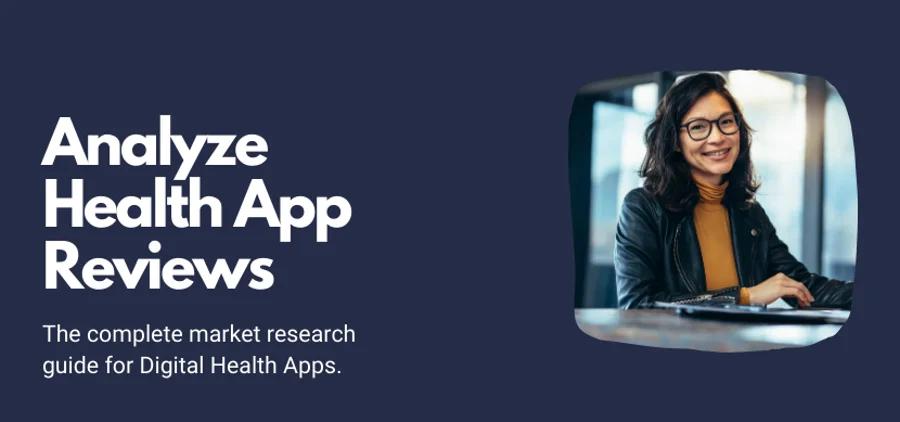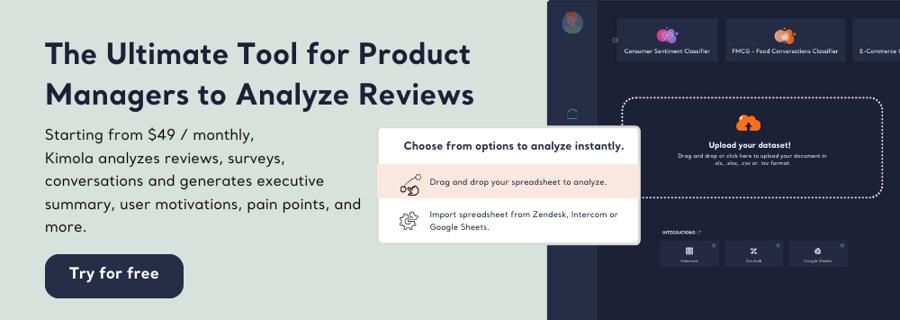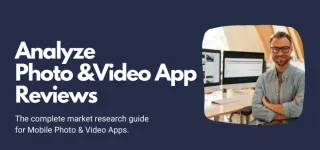Complete Market Research Guide for Digital Health Apps
Jan 18, 2026 - 19 minute read
Introduction
Imagine waking up, checking your phone, and having an app give you a friendly nudge to remind you to take your morning medication. 📱 Or perhaps you're in your favorite yoga pose, listening to an app guide your breathing with calming precision. 🧘♀️ Welcome to the world of digital health apps, where technology meets healthcare to support our wellness in truly remarkable ways. From managing chronic conditions to encouraging healthier habits, these apps are redefining how we approach our health and well-being.
In recent years, digital health apps have become indispensable tools in our lives. They offer convenience, accessibility, and a personalized touch to healthcare that traditional methods struggle to match. As our lifestyles change and global health challenges arise, the reliance on these digital solutions only intensifies. Whether it's through telemedicine consultations, mental health support apps, or tools that track fitness and nutrition, the demand for digital health tools has skyrocketed. 🚀 They empower us to take control of our health journeys and remain connected with healthcare providers—no matter where we are.
However, ensuring that digital health apps genuinely meet the needs of users isn't just about creating a sleek design or an intuitive interface. This is where market research enters the scene as a pivotal component. By understanding the real challenges faced by users, developers can craft solutions that not only address specific needs but also comply with strict healthcare regulations. Market research provides the insights necessary to navigate these complexities and shape apps that are both innovative and compliant.
In this comprehensive guide, we're setting off on a journey through the world of market research in the digital health app industry. We'll explore practical steps and introduce innovative strategies to ensure that your app not only reaches but resonates with its intended audience. From identifying user pain points to leveraging the latest in data analytics and technology, we'll equip you with the tools and knowledge to thrive in this dynamic field. So, buckle up—this is going to be an exciting ride full of insights and actionable advice. Welcome to your ultimate guide on successfully navigating the digital health app market! 🎉
1. Understanding the Digital Health App Market
Stepping into the digital health app market is like embarking on a journey through a vibrant landscape filled with innovation and opportunity. Over the last decade, digital health apps have made remarkable progress, evolving from basic fitness trackers to comprehensive platforms covering chronic disease management, telemedicine, and mental health support. This rapid evolution has been largely driven by technological breakthroughs such as artificial intelligence (AI) and the Internet of Things (IoT). 💡 AI has introduced predictive analytics and personalized health insights, while IoT has connected various health-monitoring devices to create an integrated health ecosystem that was previously unimaginable.
Moreover, the market is filled with untapped potential, particularly in areas like rural healthcare and geriatric support. Digital health apps can bridge gaps in rural regions by offering remote consultations and care plans, while catering to the unique needs of the expanding elderly population with apps dedicated to managing medications and appointments.
As we navigate this industry, it’s essential to consider the regulatory environment shaped by frameworks like HIPAA in the U.S. and GDPR in Europe. These regulations are designed to protect patient data and privacy, presenting both challenges and opportunities. Compliance is crucial, but it also offers a competitive edge by establishing your app as trustworthy and reliable in the eyes of users concerned about data privacy. 🔒
Understanding your app's target audience is key to unlocking a successful health solution. Demographic segmentation—considering factors such as age, income, and education—helps tailor messaging to each group’s needs. Yet, it’s the insights from psychographics—understanding user motivations, attitudes, and lifestyles—that truly refine your app’s approach. Whether addressing the needs of a busy mom looking for quick fitness routines or a millennial seeking mental health support, these insights help align app solutions with user expectations, creating a product that not only meets but exceeds demands. 👍
By thoroughly understanding the digital health app market, you'll lay a strong foundation for conducting meaningful market research and crafting digital health solutions that are innovative and resonant with users' real needs. Let's embark on this exploration, keeping the user at the heart of every decision! ❤️
2. Importance of Market Research for Digital Health Apps
Just like a skilled sailor uses charts and instruments to navigate the open sea, market research acts as the guiding star for anyone venturing into the digital health app industry. 🌟 It's not just about understanding where you’re headed; it's about ensuring you arrive there efficiently and successfully. Embarking on app development without solid market research is a bit like setting sail without a compass—you’re bound to drift astray. Market research reduces the uncertainty that often plagues product development by illuminating genuine user pain points and revealing unmet needs. By understanding those needs, developers are empowered to create solutions that resonate deeply with users, all while minimizing the risk of entering a market that isn't ready or willing to accept their offering.
Consider a digital health app designed for diabetes management. Through comprehensive market research, the developers identified a common user pain point: users were overwhelmed by the sheer volume of health data and needed a simplified, user-friendly interface. The app's breakthrough feature—a dashboard offering concise, personalized health insights—was born directly from these user insights, transforming a potential frustration into a beloved feature. 🎯
Market research isn’t a one-size-fits-all process; it encompasses a variety of methods tailored to capture the most relevant and actionable insights. On the primary research front, technological advancements have brought about creative methods like virtual focus groups and interactive surveys. These not only engage users more dynamically but also allow researchers to gather a wealth of qualitative data directly from their target audience. The magic happens when this qualitative data is combined with quantitative metrics. The synergy between qualitative insights, capturing the subtleties of user experiences and emotions, and quantitative data, providing numerical context to user behaviors, creates a holistic understanding of your audience. For instance, while survey numbers might indicate a high app usage rate, interviews or focus groups could reveal that users still feel unsure about complex features. This balanced approach provides a clearer picture, allowing for more informed decisions. 📊
Market research is fundamental in unveiling the diverse layers of user needs and preferences, leading to an app that doesn't just exist in the market but thrives within it. As we delve deeper into our guide, keep in mind how these research foundations will empower you to design digital health solutions that connect with users on a personal and impactful level. Let's continue our journey! 🌈
3. Leveraging Data in Digital Health Market Research
In the realm of digital health apps, data is your most valuable ally. It’s the raw material that, when properly harnessed, can lead to insightful discoveries and groundbreaking innovations. 🚀 While traditional data sources like user surveys and app usage statistics continue to provide valuable insights, there are other rich veins of information that often go underutilized. Take electronic health records (EHRs), for example. These records offer an in-depth look at patient history and treatment outcomes, providing a comprehensive source of data for identifying prevalent health issues and service gaps. Wearable devices, too, have become a treasure trove of real-time health metrics. From heart rate to sleep patterns, these devices collect continuous data that can offer an unparalleled view of user habits and needs.
Beyond these, the world of social media opens up yet another data frontier. Social media sentiment analysis allows you to tap into patient communities, gauging their opinions and emotions regarding health issues and digital health solutions. This method provides an authentic look at patient feedback, revealing trends and preferences that might not surface in more structured data collection efforts. Once you’ve gathered data, the next step is to analyze it effectively. Enter the world of advanced data analytics tools and platforms, which are specifically designed for handling the complexities of healthcare data. These tools leverage AI and machine learning to streamline data analysis, bringing powerful capabilities like predictive analytics into play. Predictive analytics can help you anticipate future trends and user behaviors, enabling you to stay ahead of the curve and adjust your strategies proactively. 📈
AI doesn’t just stop at predictive analytics; it’s also key in uncovering hidden patterns within large datasets. For instance, AI can analyze patient feedback and app usage data to identify recurring themes or issues, providing actionable insights that might otherwise go unnoticed. Whether spotting common user frustrations or uncovering frequently used app features, AI-driven analysis empowers you to make informed decisions and enhance the user experience. Incorporating sophisticated data collection and analysis techniques into your market research strategy is essential for crafting digital health solutions that really resonate with users. By leveraging both traditional and innovative data sources, as well as cutting-edge analytics tools, you’ll be well-equipped to navigate the complexities of the digital health landscape and deliver apps that truly meet user needs. Let’s continue this data-driven journey! 🔍
4. Developing a Comprehensive Market Research Strategy
Crafting a well-rounded market research strategy is akin to cooking up a delightful recipe; you need the right blend of ingredients and a mindful approach to guarantee success. 🍲 The cornerstone of any effective strategy begins with setting SMART goals—those that are Specific, Measurable, Achievable, Relevant, and Time-bound. These objectives create a clear roadmap for your research journey. Instead of broadly aiming to "expand market reach," a SMART goal might be to "increase app downloads by 25% within the next quarter through a targeted social media marketing campaign." This level of specificity not only sharpens your focus but also ties your research directly to tangible business outcomes.
Data collection is fundamental to this process. Platforms such as Google Play, the Apple Store, and various social media channels are treasure troves of customer feedback. These platforms serve as vital epicenters where users express their opinions, likes, dislikes, and suggestions. By pinpointing and leveraging such sources, you can gather insights that closely align with your app's objectives. However, simply collecting this feedback isn't enough; analyzing it effectively is crucial. This is where text analysis and AI-powered tools like Kimola come into play, revolutionizing how customer feedback is transformed into actionable insights. ⚙️
Kimola stands at the forefront of technological solutions in market research, offering powerful tools that leverage AI, machine learning algorithms, Natural Language Processing (NLP), and text analysis. These technologies allow Kimola to process vast amounts of customer feedback efficiently, providing deep insights that drive business growth. By automating the analytics process, Kimola eliminates the cumbersome task of manually sorting through mountains of reviews, instead offering real-time analysis. The process starts with data scraping from public review platforms like app stores, collecting a wide range of customer opinions. Kimola’s sophisticated AI then analyzes this data to discern patterns, sentiments, and recurring themes.
Kimola offers tailored solutions to meet diverse business needs. Kimola.com is perfect for quick, one-time analyses: by simply entering links from review sites or app stores, the platform dynamically classifies data into insightful clusters without requiring prior training.
For more in-depth analysis needs, Kimola dashboard steps in with advanced capabilities, using multi-label classification to capture nuanced feedback and text analysis for offering aspect-based sentiment insights into specific product aspects. Businesses can analyze their own custom data, too—all it takes is uploading an Excel file directly onto the platform. 📊
The user-friendly design of Kimola ensures that valuable insights like executive summaries, FAQ lists, and popular feature outlines based on customer feedback are extracted seamlessly. These insights can easily integrate into presentations, with standard performance metrics, pivot tables, and direct comparisons readily available. Furthermore, Kimola allows findings to be exported in various formats, such as PPT, Excel, and PDF, facilitating efficient reporting and sharing. 📎
Together, by setting thoughtful goals, using insightful data collection and analysis techniques, and understanding the competitive landscape, you create a comprehensive market research strategy that empowers informed decision-making and drives your digital health app's success. Let's embark on this exciting journey toward market success! 🚀
5. Analyzing Competitor Strategies in the Digital Health Space
To carve out a niche in the bustling digital health space, it’s critical to understand the competitive landscape and learn from it. Competitor analysis isn't merely about identifying who your competitors are but understanding their strengths, weaknesses, and strategies. This insight can guide your own app’s development and market positioning to ensure you offer something unique. 🔍
Begin by identifying your direct and indirect competitors. Direct competitors offer similar digital health solutions, while indirect competitors might address the same health challenges but through different means. Once identified, delve into their strengths and weaknesses. Tools like SWOT (Strengths, Weaknesses, Opportunities, Threats) analysis are invaluable in this regard, helping highlight areas where your app can excel or needs improvement.
Examining competitor customer feedback is another key aspect of this process. Platforms like Trustpilot, Google Play, and Apple Store reviews offer a goldmine of information, revealing user sentiments and identifying common pain points that your app can address better. By analyzing these reviews, you can discover unmet needs or features that users wish existed, providing you with a unique angle to meet those demands.
Finally, study their marketing strategies and user engagement practices. What channels do they utilize? How do they engage with their users? Understanding these facets can help craft a more effective go-to-market strategy for your digital health app, ensuring you stand out in a crowded market. 💡
Through comprehensive competitive analysis, you gain invaluable insights that can shape your app’s development, branding, and marketing strategies. By learning from the triumphs and trials of your competitors, you’re equipped to navigate the digital health space with confidence and carve out a distinctive place for your app. Let's dive into this competitive landscape with curiosity and strategy! 🌟
6. Applying Market Research Insights to App Development
Market research is not just a preliminary step; it's the compass guiding the entire journey of app development. By applying these insights effectively, you can create a product that truly resonates with users and stands out in the competitive digital health space. At the heart of any successful app is an empathetic design that prioritizes the user experience. 🧩 Market insights are invaluable here, providing a deeper understanding of what users find intuitive, accessible, and engaging. By incorporating this knowledge, you can craft designs that meet the unique needs of your audience, whether that means larger buttons for ease of use or customizable dashboards for personalized health tracking.
Iterative testing and prototyping play a crucial role in this process, allowing you to refine app functionality based on real user feedback and ensure that each feature aligns with user expectations and preferences. ⚙️
Monetization is a critical aspect of sustainability for any digital health app, and market research offers a treasure trove of insights to inform your strategy. 💡 Innovative pricing models like freemiums—where basic services are free and additional features require payment—or micro-transactions can be tailor-made for the digital health landscape, offering flexibility and accessibility to users. Additionally, exploring payer-provider partnerships can open new revenue streams. By aligning with healthcare providers or insurers, your app can integrate deeper into the healthcare ecosystem, offering value-added services that benefit all stakeholders.
Bringing your app to market isn't just about launching it; it's about ensuring it resonates with your target users and gains traction. Creative go-to-market strategies should leverage both digital and traditional marketing channels. Online, this could mean using targeted ads and engaging social media campaigns, while traditional methods might involve partnering with healthcare professionals to reach potential users. Community engagement is equally important—practices such as building forums or holding webinars not only foster user interaction but also build trust and encourage adoption. When users feel they are part of a community, they are more likely to become advocates for your app. 🤝
By weaving market research insights into every aspect of app development—from design and pricing to marketing—you create a product that doesn't just meet the market's needs but exceeds users' expectations. As we continue this exploration, keep in mind how these strategies will empower you to deliver exceptional value and carve out a unique space in the digital health landscape. Let's keep moving forward! 🌟
7. Navigating Challenges in Digital Health Market Research
In the fast-paced world of digital health, where innovation frequently meets regulation, the journey of market research is accompanied by its own unique set of challenges. Addressing privacy concerns is paramount, especially when user data stands as both a valuable resource and a sensitive issue. The ethics surrounding data usage are critical—users must trust that their personal health information is managed with care and responsibility. 🔒 Achieving this begins with transparency. By clearly explaining what data is collected, why it’s needed, and how it benefits the user, apps can bridge the gap of trust. A comprehensive yet straightforward privacy policy can enhance this trust, transforming transparency into a competitive advantage.
To elevate data security, consider innovative solutions like blockchain technology. Beyond just a passing trend, blockchain offers a secure, decentralized method for managing and transmitting health data. Its implementation ensures data integrity and transparency, reassuring users that their information is handled securely and ethically. By leveraging blockchain, developers not only establish a strong security framework but also comply with global data regulations, fostering both trust and reliability.
Simultaneously, adapting to rapid technological changes poses another significant challenge in the digital health sphere. With emerging technologies like 5G promising to revolutionize app performance by enabling faster data transfers, developers must maintain agility to adapt efficiently. Employing an agile research methodology enables responsiveness and flexibility, allowing for quick testing and iteration to refine both products and insights. This approach means remaining open to feedback and being prepared to pivot features or focus as new technological landscapes arise. 🌐
Engaging with tech-forward partners and participating in technology communities can keep developers informed about the latest advancements, offering insights into potential impacts on app performance and revealing new avenues for innovation. By balancing ethical data practices with adaptability to technology changes, digital health app developers can navigate these challenges effectively, building trust and remaining at the forefront of innovation. These strategies empower developers to overcome obstacles and steer their apps towards success, ready to tackle whatever challenges lie ahead in this dynamic field. 🚀
8. Future Trends in Digital Health Apps
The digital health landscape is evolving at an incredible pace, with emerging technologies and innovations reshaping how we engage with our well-being. One of the most exciting developments on the horizon is the rise of AI-driven personal health assistants. 🤖 Picture a virtual health companion that’s always at your side, ready to offer personalized health tips, reminders to stay hydrated, or analyses of your daily fitness data to recommend the best workout routines. These AI assistants promise to transform user engagement, making health management more proactive and personalized than ever before. They enhance user motivation by providing real-time feedback and crafting an interactive health journey tailored to individual needs.
Furthermore, augmented reality (AR) is set to revolutionize remote diagnostics and patient education. With AR technology, users might soon be able to visualize complex medical information in 3D within the comfort of their own homes. 📱 Whether it’s learning about a medical condition or understanding a treatment plan, AR offers an immersive experience that can make health education accessible and engaging. For remote diagnostics, AR tools might assist healthcare providers in guiding patients through simple assessments at home, adding a deeper, more interactive layer to telehealth consultations.
As digital health apps become increasingly sophisticated, the convergence of these apps with traditional healthcare systems is becoming more evident. Industry thought leaders foresee a future where healthcare apps are integral to conventional healthcare pathways, seamlessly integrating with hospital systems to manage treatments, track prescriptions, and even contribute to electronic health records. This evolution would herald a new era of coordinated care, improving both patient outcomes and healthcare efficiency.
Additionally, there is a growing shift toward holistic health management apps that encompass not only physical health but also mental well-being, nutrition, and lifestyle coaching. This comprehensive approach is gaining acceptance among healthcare providers, who acknowledge the importance of treating the whole person rather than isolated symptoms. 🌿 All-in-one platforms simplify the process for users, allowing them to manage their entire health journey cohesively and potentially providing a one-stop-shop for healthcare solutions.
By embracing these future trends, developers and healthcare providers can align
more closely with the evolving needs and expectations of users. Staying ahead of the curve and integrating innovative solutions will allow digital health apps to continue transforming healthcare delivery, fostering deeper connections between technology and well-being. Here’s to a future where managing health is not only efficient but also enjoyable! 🌟
Conclusion
We've traversed the fascinating and dynamic landscape of market research for digital health apps, uncovering valuable insights and strategies along the way. From understanding the vibrant digital health app market to harnessing advanced data techniques, and from navigating regulatory challenges to exploring future trends, it's clear that this field is as exciting as it is complex. Market research is the compass guiding us through this journey, ensuring that digital health solutions not only meet user needs but exceed expectations in ways that are both innovative and responsible. 🧭
As we’ve seen, the key to thriving in the digital health app ecosystem is staying adaptable and user-focused. By embracing emerging technologies and maintaining transparency with users, we can build trust and foster lasting relationships. The future is teeming with possibilities—from AI-driven personal health assistants to the integration of holistic health management apps—and those who remain curious and proactive will undoubtedly lead the way. 🔄
At the heart of it all, remember that the ultimate goal is to empower individuals on their health journeys. Whether it's through seamless connectivity with healthcare providers, offering personalized health insights, or simply making health management more accessible and engaging, these apps have the potential to make a meaningful impact on people’s lives. ❤️
Thank you for joining us on this exploration. Armed with the insights and strategies from this guide, you are well-equipped to navigate the vibrant world of digital health and create solutions that resonate deeply with users. Here’s to your journey ahead—may it be as rewarding as it is innovative! 🎉









